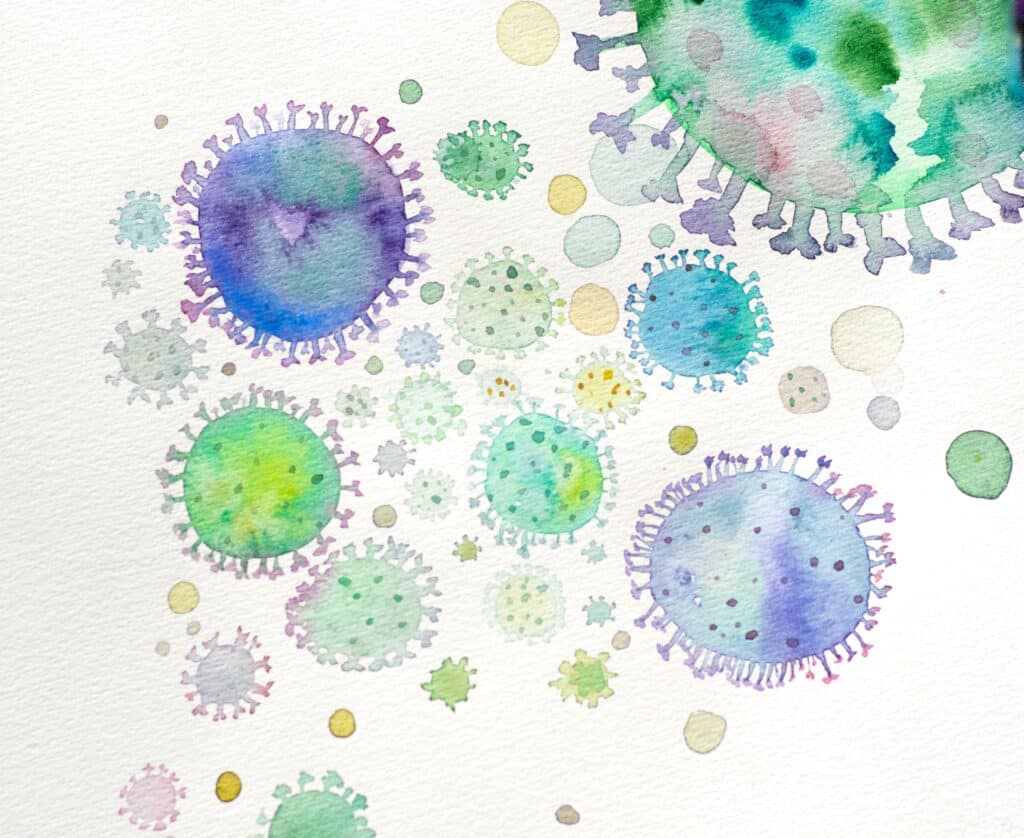Impossible to not talk about biotics in food supplements ! New ingredients, new strains or even new health benefits, the microbiome is always in the news. Pre, pro or post, Nutra Skills sheds lights on the different biotics !

Pre-biotics in food supplements : towards a more original sourcing.
Since 2016, pre-biotics are defined by the International Scientific Association for Probiotics and Prebiotics (ISAPP) as “selectively used substracts by host microorganisms and confer a health benefit”(1).
Most “famous” pre-biotics substracts are found in everyday food. They are found, for exemple, in :
- Roots for insulin,
- Fruits and vegetables for Fructo-OligoSaccharides (FOS) and Galacto-OligoSaccharides (GOS)
- Also in cereals, seeds and legumes.
But prebiotics are not limited to FOS/GOS oligosaccharides, and also include more ‘original’ sources such as(1,2) :
- Human Milk Oligosaccharides (HMO), which are found in infant formula and also,
- Pre-biotic polyphenols present in certain food supplements(1).
The health benefits of prebiotics on the intestinal sphere are well documented. But their effects on health go beyond this “area”! Skin, urogenital tract, allergy, or even metabolic diseases (overweight and obesity, dyslipidaemia, type 2 diabetes)(1,2).
It is a safe bet that prebiotics will continue to be talked about !
Pro-biotics in food supplements : towards the prevention of some diseases ?
Pro-biotics are defined since 2013 by the ISAPP as ” living microocranisms that, when administered on appropriate amount, confer a health benefit on the host”(3).
By 2022, the market for dietary supplements with pro-biotics is estimated to be worth $8.2 billion worldwide(4).
As pre-biotics, health benefits of pro-biotics are varied : digestive system, immunity, skin beauty, women’s health, etc.(3)
But the use of biotics in food supplements goes further with precising pro-biotics to prevent some diseases. The “discovery” of those pro-biotics is based on two types of approach : “top-down” and “bottom-up“(5).
- The “top-down” approach consists of identifying bacteria found in greater quantities in healthy individuals than in patients with impaired health. For example, in some patients with Crohn’s disease, Faecalibacterium prausnitzii (F prausnitzii) is present in low proportions and is associated with an increased risk of disease relapse. Thus, F prausnitzii may be considered as a potential treatment to reduce inflammation in patients with Crohn’s disease(5).
- The “bottom-up” strategy is based on a computer prediction of potential bacteria to produce molecules capable of modulating the host’s metabolism. Using this approach, the Hafnia alvei 4597 strain, via the production of a ClpB protein, was identified for the global management of excess weight(5).
There is no doubt that pro-biotics have great potential in the prevention of certain diseases. Nevertheless, research will have to take into account the intrinsic inter-individual variability to optimise the effectiveness of these new pro-biotics.
Pro-biotics in food supplements : what is the status of French regulation ?
.The use of the term “probiotics” is currently being discussed by the French authorities to consider authorising the use of it on-pack. Some neighbouring countries, such as Denmark, Spain, Italy and the Netherlands, already allow it. Italy has also defined guidelines for the use of this term.
Post-biotics in food supplements : an emerging category.
In 2021, post-biotics are defined by the ISAPP as “a preparation of inanimate micro-organisms and or their components that confers a health benefit on the host”(6).
Post-biotics are used for the same health benefits as pro-biotics, such as digestion and immunity, for adults but also for paediatric patients.
The main advantages of this “form” of bacteria are the stability and safety of the formulation due to their “inactivation“.
The use of post-biotics for frail people, for whom live biotherapies are not recommended, offers a new potential for action. Post-biotics will find their audience among current consumers but also among new populations.
Pre, pro or post-biotics, in any form, rely on biotics in food supplements is (always) a good idea !
- ISAPP, 2020. Prebiotics.
- Gibson, G., Hutkins, R., Sanders, M. et al. Expert consensus document: The International Scientific Association for Probiotics and Prebiotics (ISAPP) consensus statement on the definition and scope of prebiotics. Nat Rev Gastroenterol Hepatol 14, 491–502 (2017).
- ISAPP, 2020. Probiotics.
- Nutraingredients.com
- Microbiome Foundation, 2021.